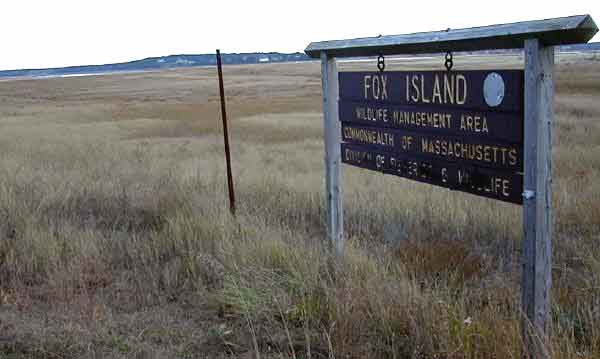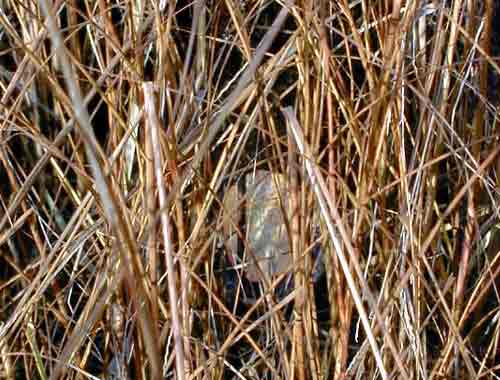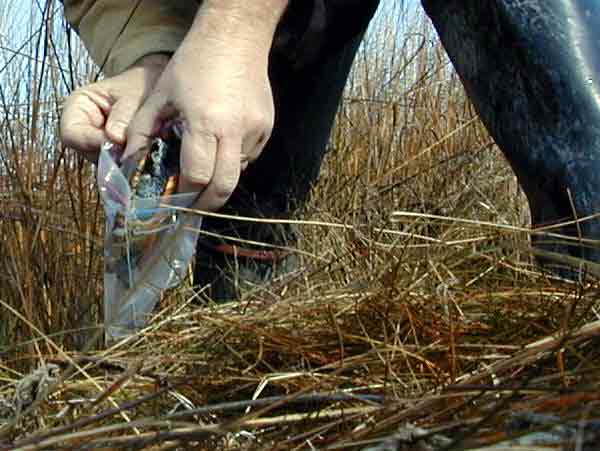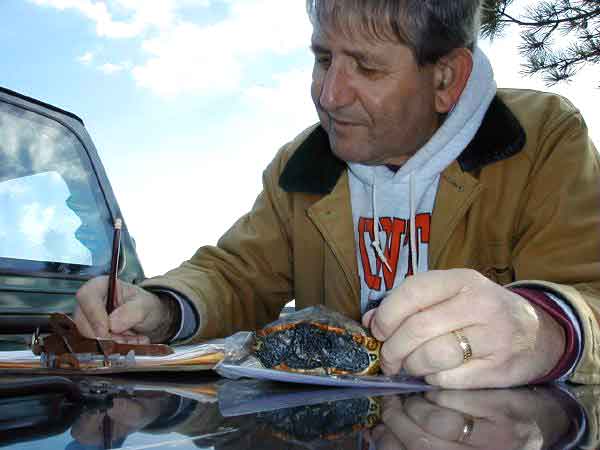Fox Island Marsh Surrenders Another Dead Terrapin
20 November 2000
Acres of tall marsh grass still mask the extent of this year’s terrapin
die-off in the Fox Island Wildlife Management Area. The improbability
of finding dead turtles trapped in these thickets will remain astronomically
high until winter storms and ice floes scythe the field.

Yet we were able this morning to spot the plastron of a young female, barely
visible through dying grass stalks at the east edge of Field Point.

Encouraged by this find, we waded deeper into the marsh only to back off
when Rags plopped into a quick-mud creek channel disguised by the dense
vegetation. Better to retreat with honor and limbs intact to return
another day.

The remains proved to be a prepubescent 8-year-old female — a significant
loss to the Wellfleet population. Maybe a year short of sexual maturity,
she had escaped the many and obvious threats to survival since her birth in the
early 90s. She had avoided nest predation, which reaches more than 90
percent. She evaded predators stalking hatchlings as they emerge and race
for the tidal marsh. She survived infancy when her tiny size represented a
tasty morsel to a host of marsh critters. She lived through eight harsh
winters, burrowed under black ooze for seven months of the year. At her
current size and age, she had outgrown nearly every predator and threat.
And now she was about to enter the most important and productive phase for the
health of the terrapin population. Because turtles are such long-lived and
slow-growing animals, mature females are the critical lynchpin in terrapin
survival. Researchers have estimated that it takes a female turtle nearly
10 years of full sexual production to lay enough eggs to simply replace
herself. We can’t afford to lose many turtles such as this
one.

|